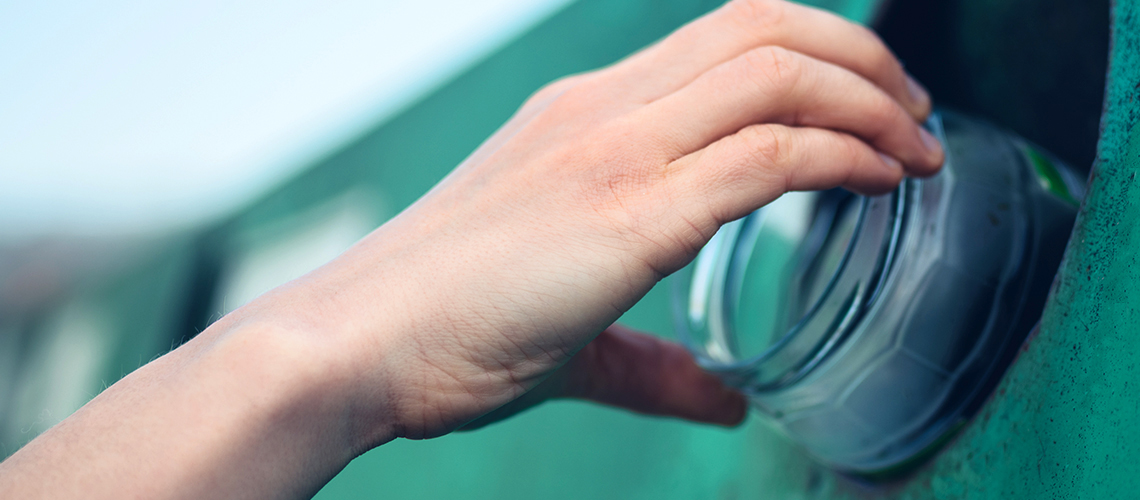Let’s not bottle out of glass recycling
14 Jan 2020

Barry Phillips, Director - Enva Northern Ireland, discusses why recent moves to replace dedicated single stream glass collections with comingled services have the potential to seriously damage both environmental and economic performance.
Glass is the perfect circular economy material as it’s 100% and endlessly recyclable without any loss to quality. The increased use of cullet (glass that is crushed and ready to be re-melted), is increasingly a priority for the glass industry. Every tonne of glass re-melted saves 246kg of carbon dioxide emissions as well as reducing energy consumption and reliance on virgin raw materials.
The use of cullet in glass packaging such as bottles and jars is however dependent upon the supply of a high quality and consistent product. Despite significant technological improvements in materials recycling facility (MRF) this is still hard to deliver when recovering glass from a comingled source. The reality is that the physical properties of glass make it brittle and inflexible and as a result it is unsuited to the rigours of an automated recycling process. This propensity to shatter and break into small pieces makes it hard to separate out and capture and means some of the material gets lost into other recyclable streams or residual waste destined for disposal.
Glass that can be recovered from a MRF is also less likely to be of a high enough quality to reuse in the manufacturing of new glass bottles or jars. It is more likely to be destined for use as an aggregate in landscaping, road building or construction. On the face of it, the use of glass in these lower value applications could still be seen to be positive. The ultimate result however is that we lose this material forever and forgo any future value that would have been realised from its ability to be continually recycled, failing on the ideal of a circular economy. By far the best solution is to ensure that the majority of glass waste is collected as single stream, utilising high volume and cost effective collection modes such as bottle banks.
In addition to the poorer environmental result, the move to a comingled collection can also have a significant economic impact. Ultimately the higher the quality of the product you can recover and supply, the greater the commercial value. Glass cullet that can be reused in packaging can command a significantly higher revenue than material being used as an aggregate. As mentioned above, a proportion of the glass processed through a MRF will also find its way into waste streams destined for disposal. This means it will attract over £90 per tonne in Landfill Tax alone.
The issues associated with removing dedicated glass collections are not solely constrained to the short to medium term. If we remove the infrastructure required for these collections, such as boxes for households or bottle banks, we make it extremely hard to revert. Also, many members of public currently engage willingly in valuable source separation and transport of the glass to their dedicated local collection point, at no additional cost to the council. This responsible recycling behaviour has been hard fought for over many years but could quickly be destroyed if the public receive confused messages encouraging them just to put glass into their comingled recycling or general waste bin.
Whilst the economics of glass recycling have shifted in recent months the reality is that it remains one of the most efficient materials to recycle and benefits from a well-established collection and processing infrastructure. Enva alone offers a wide range of options for the collection of glass including wheelie bins, commercial containers, bottle banks, skips and tipping trailers as well as providing one-off collections of waste glass from events such as exhibitions or festivals. Once collected, our advanced and fully equipped facilities have the capacity to process and supply up to 100,000 tonnes of cullet a year, all of which meets the exacting specifications of the glass manufacturing industry and helps realise commercial and environmental benefits for the whole value chain.
| View all stories